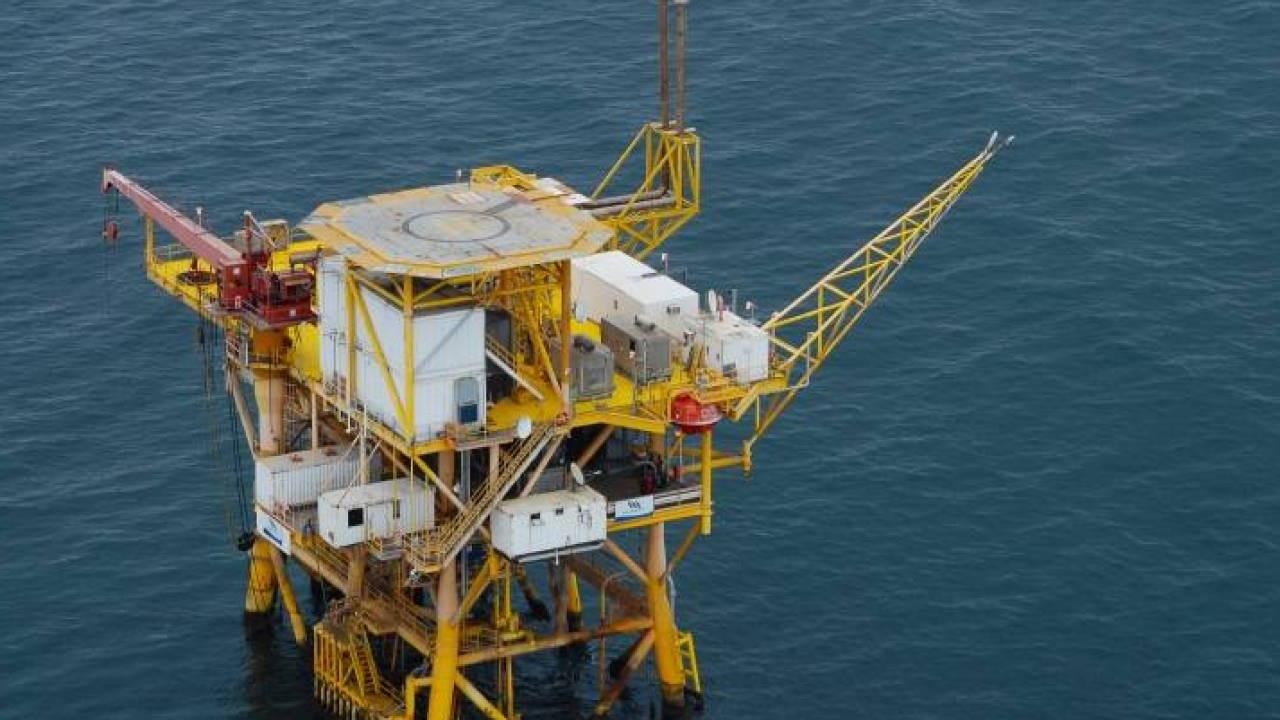
Three experts analyze the situation at the Amistad field, whose operation was declared a national priority by the government.
Ecuador barely exploits its natural gas resources compared to other countries in the region, such as Brazil, Argentina, Peru, Colombia, and Bolivia.
The Amistad field is proof of this: its production could reach much higher than current levels, primarily to supply the Termogás Machala power plant, experts say.
This field, located in the Gulf of Guayaquil, has been put out to tender; however, this has not materialized at the time.
Currently, the Daniel Noboa administration has declared its operation a national priority, aiming to implement urgent and emerging actions to increase natural gas production for the Machala thermoelectric plant.
"The bidding process for the Amistad field has been inexplicably postponed, and instead, the way has been paved for the import of natural gas," says energy analyst Fernando Salinas.
Freddy Carrión, a professor in the Petroleum program at the School of Earth Sciences Engineering at the Escuela Superior Politécnica del Litoral (ESPOL), points out that an intervention campaign has been planned to restore production levels, including six workovers on the gas wells. However, this campaign has not yet been implemented due to various political and economic restrictions.
The Amistad field is recording an average production of 18 million cubic feet per day, which represents a decrease from the average of recent years, estimated at approximately 20 million cubic feet per day, Carrión says.
For his part, Salinas points out that with an extraction rate of approximately 18 million cubic feet per day, 14 million cubic feet per day supply Termogás Machala, which requires around 60 million cubic feet per day to operate at its nominal capacity, which totals around 250 megawatts (MW).
With this data, Salinas says the plant's main problem is that it doesn't have enough natural gas to operate at full capacity and is forced to use diesel, which is three times more expensive and polluting than natural gas.
Carrión offers a similar view, adding that these turbines are hybrid, capable of operating on both diesel and gas; however, diesel represents a significantly higher cost, making it strategic to guarantee the supply of natural gas from the Amistad field, which is also geographically close to the thermal power plant in Machala.
Marco Acuña, former president of the College of Electrical and Electronic Engineers of Pichincha (Cieepi), agrees with them. He reiterates that natural gas is "more environmentally friendly and less expensive," costing around US$0.07 per kilowatt hour, while producing energy with diesel costs between US$0.10 and US$0.18 per kilowatt hour.
He adds that around 2,100 MW of thermoelectric plants are installed in the country, but only about 1,000 MW are available; the rest is not available because the plants have not received the necessary maintenance.
SOURCES OF NATURAL GAS
And the country “barely uses its natural gas resources,” says Salinas.
He notes that there are two sources of natural gas: the first is the Amistad field, where 18 million cubic feet of gas are produced per day; and the second source is gas associated with oil production, which has been estimated at around 200 million cubic feet per day.
"That is to say, there are resources that are currently being wasted in the oil fields, which are given no energy or economic value and are instead sources of environmental pollution and deterioration of the health of settlers in the East," he maintains.
Carrión points out that natural gas production in Ecuador is considerably limited compared to other countries in the region and around the world.
“Despite having significant hydrocarbon resources, natural gas has historically been underexploited, and the country continues to rely heavily on imported derivatives, such as liquefied petroleum gas (LPG).”
COUNTRIES THAT MAKE THE MOST OF NATURAL GAS
Salinas points out that in South America, the countries that make the most use of natural gas are Brazil, Argentina, Bolivia, Colombia, and Peru. "There is a heterogeneous underutilization of this resource in energy end uses, particularly in industry and electricity generation."
According to Carrión, Ecuador produces less than 1% of the gas generated by Argentina, whose production exceeds 4 billion cubic feet per day. This low capacity has therefore prevented natural gas from consolidating as a competitive resource in the market, maintaining a marginal share within the national energy mix.
He adds that countries such as Peru (+1.3 billion cubic feet per day) and Bolivia (+1 billion cubic feet per day) have managed to significantly integrate this resource into their energy systems, demonstrating greater development of the gas sector.
He points out that the main obstacles facing gas production in Ecuador include:
- Limited investment in key infrastructure (gas pipelines, processing plants and transportation systems).
- Underestimation of gas potential, given that national energy policy has historically prioritized crude oil production, without a clear strategy for gas development.
- Economic and contractual problems characterized by a lack of adequate incentives for private investment and slow administrative processes, as evidenced by the postponement of the workover campaign at the Amistad field, which aims to restore natural gas production levels.
Salinas believes the country must take action to move toward a bidding process for the Amistad field and offshore exploration with the participation of international capital and companies that have the financial muscle and technology to achieve this goal.
Furthermore, he says that steps must be taken to ensure that all natural gas associated with oil extraction is used to generate electricity, which is necessary for oil extraction itself.
“Paradoxically, this last activity hires generation companies with internal combustion engines that burn diesel, polluting the Amazon and billing private operators and Petroecuador hundreds of millions of dollars per year,” he comments.
WHAT WILL THE DECLARATION AS A NATIONAL PRIORITY SERVE FOR?
Acuña believes it's a good decision to "finally take charge of and operate the Amistad field, because it will not only supply Termogás Machala, but will also cover other gas consumption needs the country has."
Carrión points out that this declaration will allow for more streamlined contract management, facilitating investment in the field with the goal of recovering or increasing natural gas production.
"Following the critical situation experienced during the 2024 dry season, it has become essential to ensure sufficient natural gas production in the Amistad field to supply the gas turbines at the Termogás Machala plant, which can generate at least 100 MW of electricity for the country," he notes.
Salinas explains that instructions are given to Petroecuador and the Electric Corporation of Ecuador (CELEC) to make arrangements for the construction of infrastructure that will make the importation of natural gas possible if local production is not sufficient to supply those 60 million cubic feet per day.
He explains that maintaining natural gas wells in infrastructure for importing liquefied natural gas takes time and that at least six months would be needed to complete well workovers and a year for the liquefied natural gas regasification infrastructure. This means that this declaration of national priority would be a bit late if these actions are to address the potential power shortage during the dry season, which begins in September 2025.









